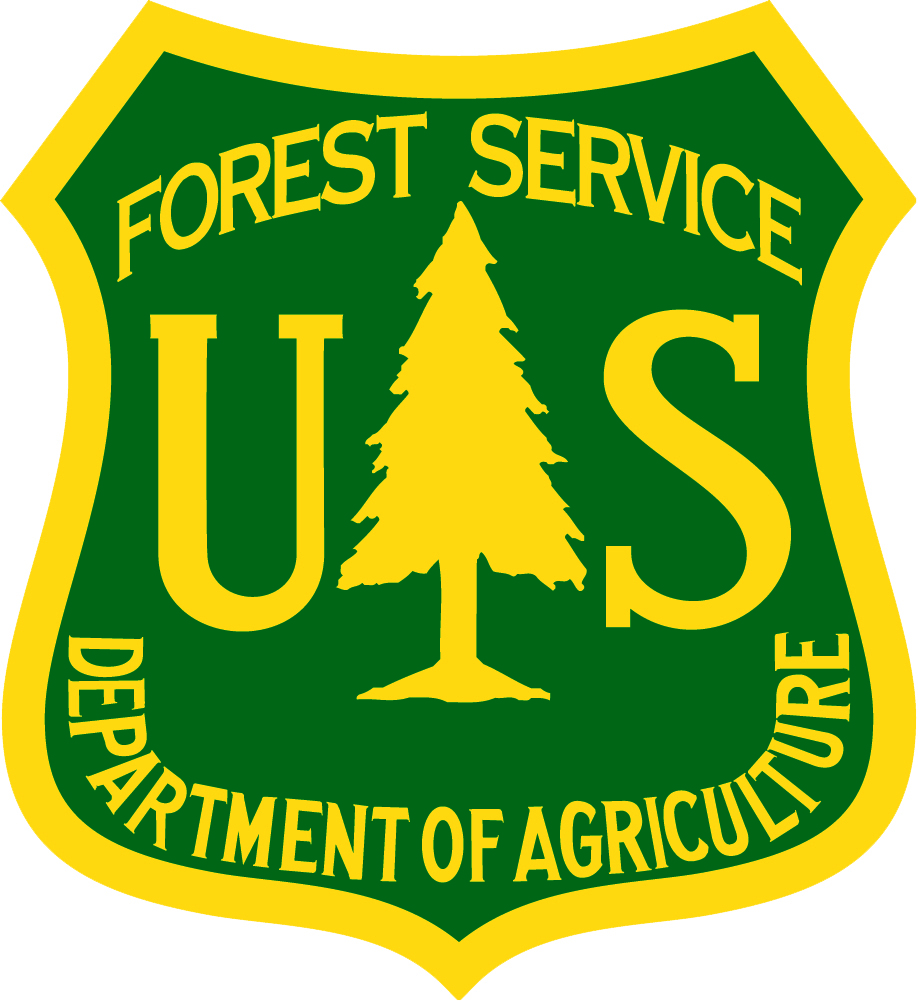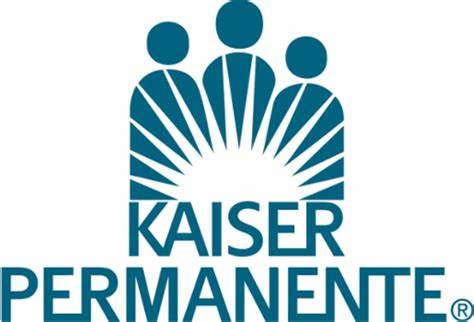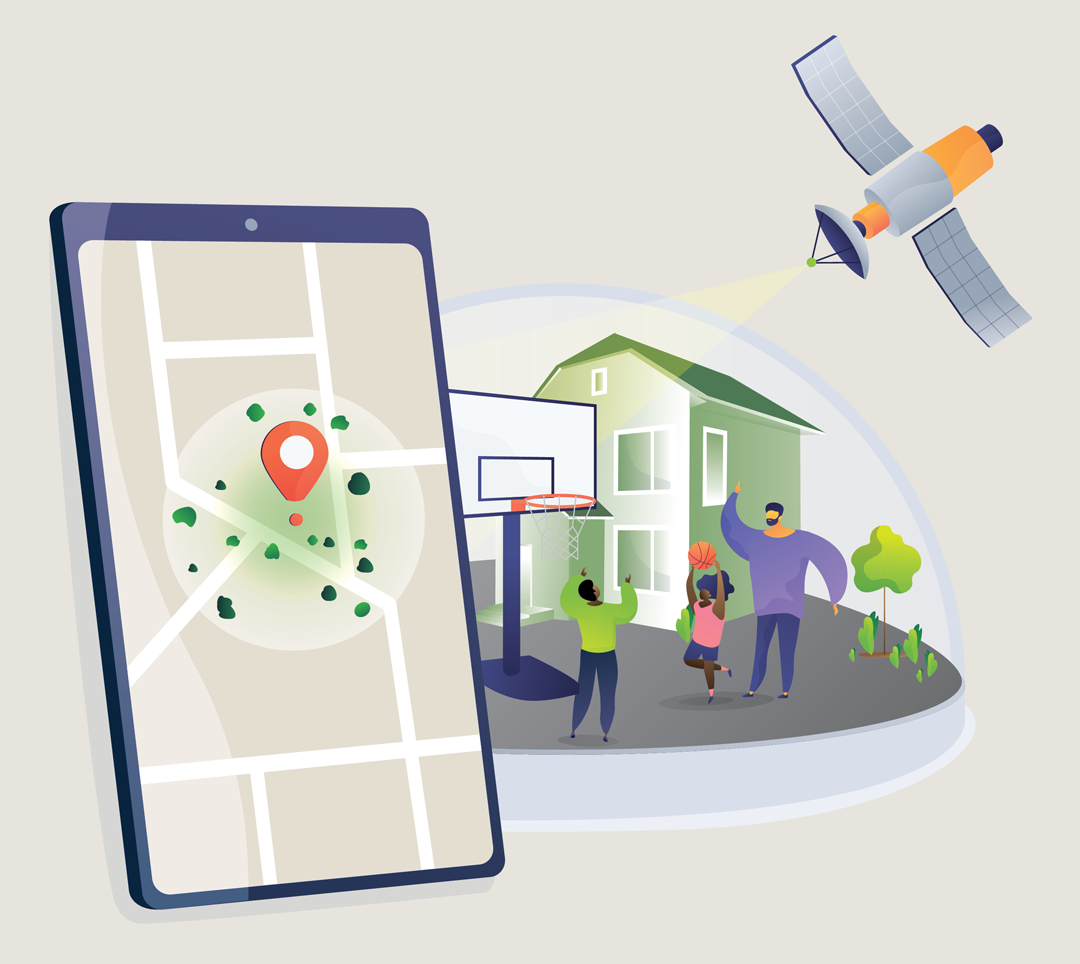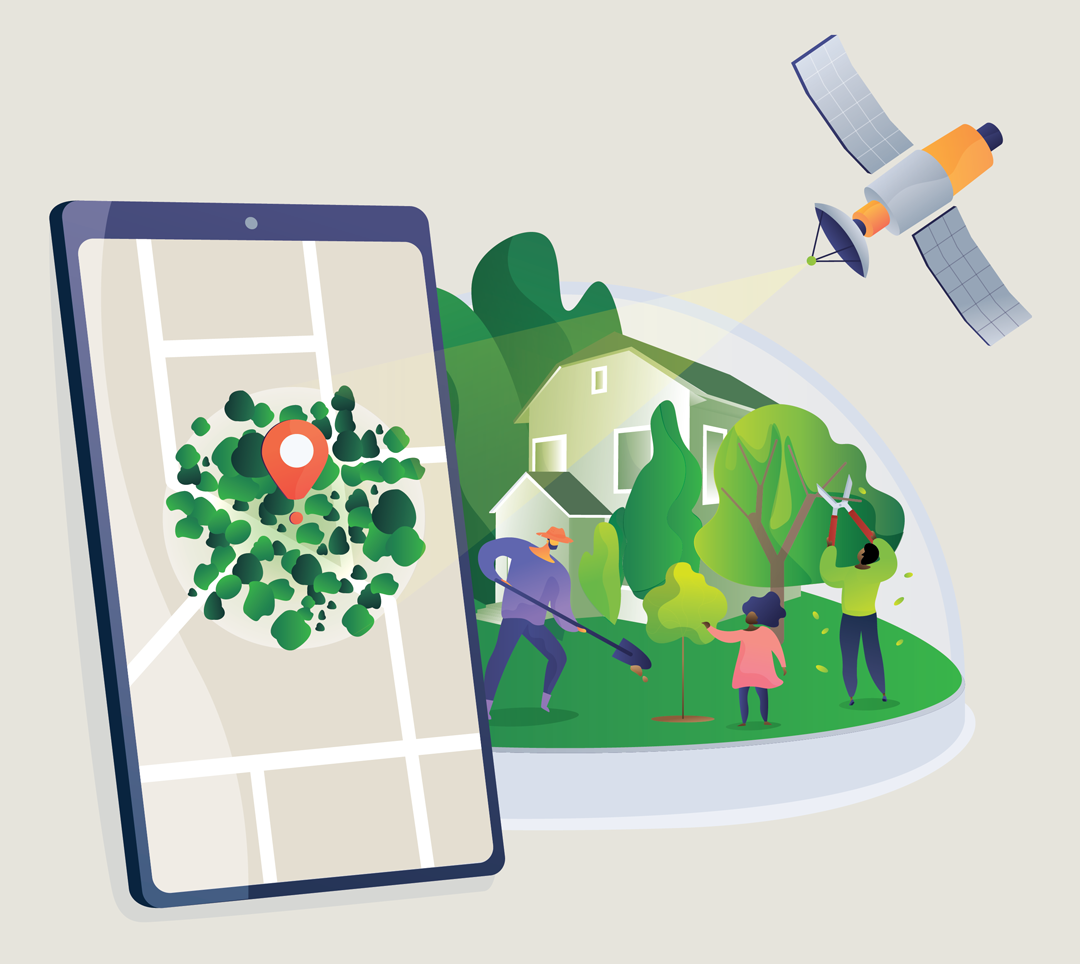Are Healthcare Dollars Growing on Trees?
Examining 5+ million Northern Californians’ neighborhood tree canopy cover and healthcare costs
A recent scientific study has found that the more tree cover around a person’s home, the lower their healthcare costs — even when considering income and other factors. The findings suggest that every extra $1 invested in trees may save $18 in healthcare costs in the city and $10 in the suburbs.
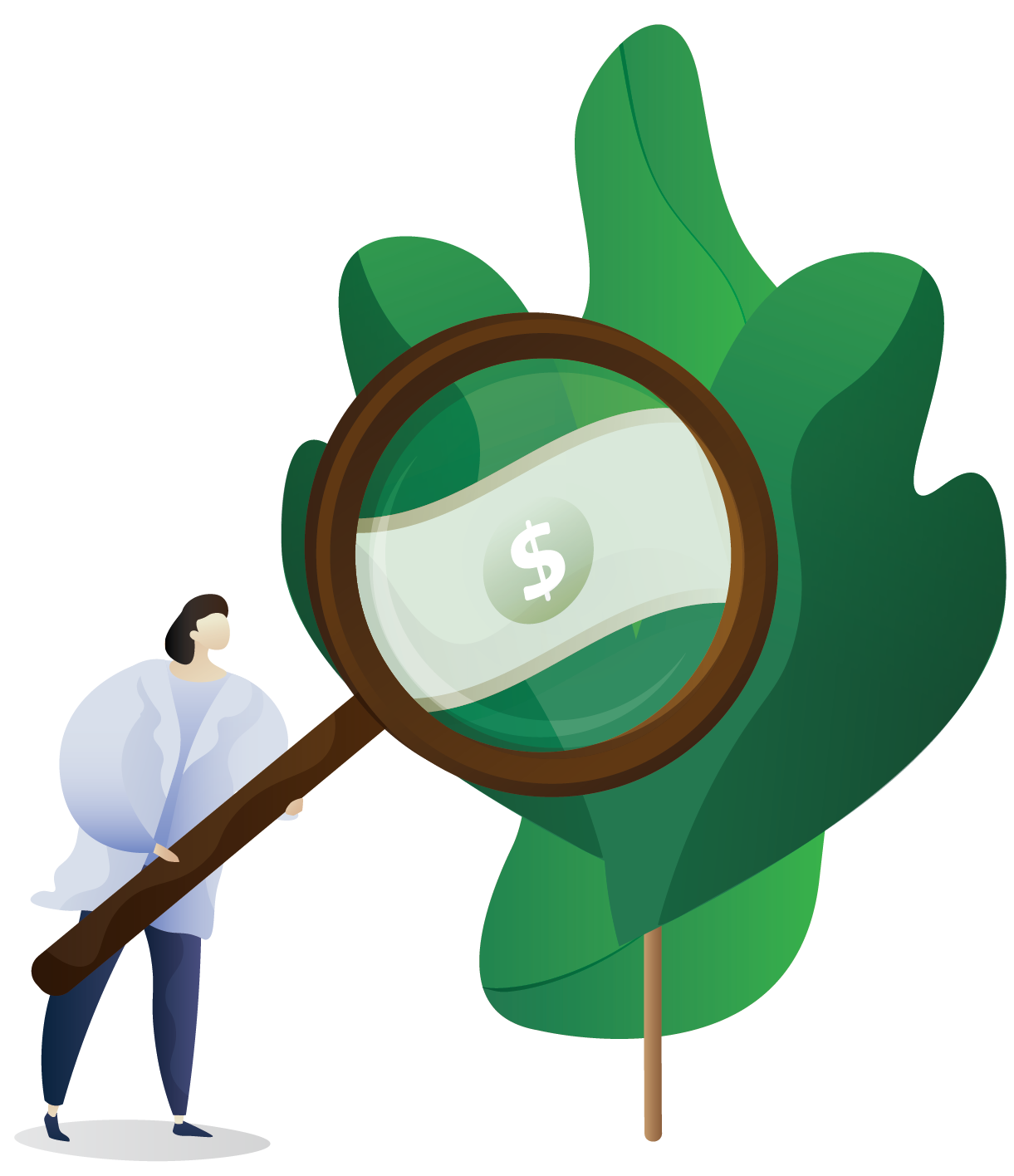
Hundreds of studies suggest that regular contact with nature is vital for long-term health. Street trees and parks seem to confer protection from a variety of diseases, including diabetes, heart disease, and mental illness – even when considering income and other socioeconomic factors. Not surprisingly then, people without the protection of trees are less healthy and spend more on healthcare. See how the prevalence of conditions and diseases increases in nature-poor environments.

Childhood Obesity up by 15%
This section could also be a slider, going through all 8 diseases and conditions.

Coronary Heart Disease up by 25%
More info about CHD. Add final slide as a link to the article on disease & conditions.

Anxiety Disorders up by 44%
More info?
It’s true! Healthcare costs are 14% higher per person per year in areas without enough trees.
Greening might offer an easy and affordable strategy for improving population health and reducing health costs – not to mention mitigating climate change.

Pullquote? Urban forests are great at generating a favorable return on investment (ROI). Every extra $1 spent on city trees helps to create significant savings on health care costs. Planting new trees and maintaining mature trees is an affordable option for reducing healthcare costs and easy to implement. Imagine what communities could do with those savings!
How was the study designed?
To test this assumption about greener neighborhoods, the researchers examined the health care costs for over five million members of Kaiser Permanente Northern California from 2003 through 2015. Next, the scientists sought to determine the amount of nature present or how ‘green’ an area was. This amount is measured using the Normalized Difference Vegetation Index (NDVI). NDVI uses satellite imagery of land cover provided by NASA and the United States Geological Survey (USGS). Link to the journal article.
Use the slider on the right to see differences in greenness, or as used in the study, NDVI (Normalized Difference Vegetation Index).
Learn more about the study.
Image of diverse group of people
5,189,303 people
The study examined healthcare costs in a racially diverse population of over 5 million residents, with roughly a quarter Hispanic/Latinx, a quarter Asian/Pacific Islander, 7% Black, and four in ten non-Hispanic whites.
Overlay KPNC service area over 10 states to show size
Over 80,000 miles2
KPNC serves a geographic area larger than ten states. It encompasses diverse residential settings, including single-family suburban neighborhoods, dense urban cores, the wildland-urban interface, and more rural landscapes.
Show healthy people in well-treed neighborhood
Rigorous testing
The relationship between trees and healthcare savings held even when controlling for age, sex, race/ethnicity, household income, housing density, population density, and air quality.

What the scientists discovered.
The research found the assumption that living in a well-treed neighborhood reduced health care costs to be true. The relationship remained constant when the scientists took other factors into account, like age, sex, race/ethnicity, household income, housing density, population density, and air quality. The findings mean trees may offer an inexpensive and widely applicable option for improving public health and reducing health care costs.

Research suggests that every extra $1 invested in city trees may save $18 in healthcare costs.
A recent study by Kaiser Permanente and public health scientists has found the more tree cover around a person’s home, the lower their healthcare costs — even when comparing neighborhoods with the same income. The findings suggest that every extra $1 invested in city trees may save $18 in healthcare costs, and every extra dollar invested in trees may save $10 in healthcare costs in suburban areas.
Study Partners



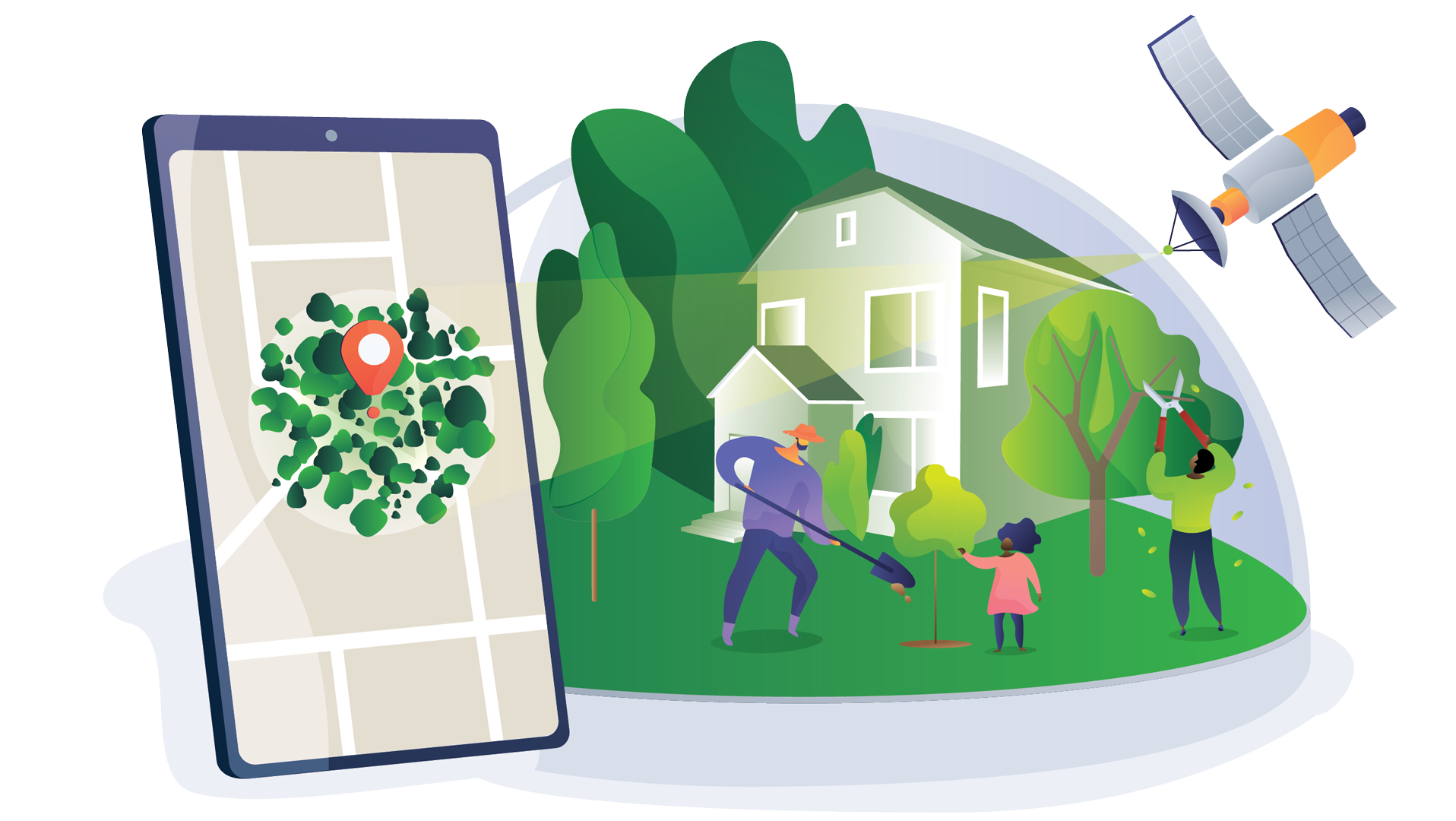
Greenery within a few blocks of your home may save you up to $330/year on healthcare — for each person in your family!
The analysis indicates that residential greenness may reduce health care costs by improving health status. Findings suggest a threshold effect: health care costs drop only after greenness levels exceed NDVI values of 0.30. Greening might offer an inexpensive, widely applicable strategy for improving population health and reducing health costs.
#HealthyTreeHealthyMe
Help us to get more trees in the ground to create greener and healthier neighborhoods.
What you can do.

Make Knowledge Contagious!
Share, share, share! Download these additional resources/graphics on trees and health. Share them with your friends and family. Include the hashtag #healthytreehealthyme. We have numerous images and captions messages backed by rigorous scientific research.
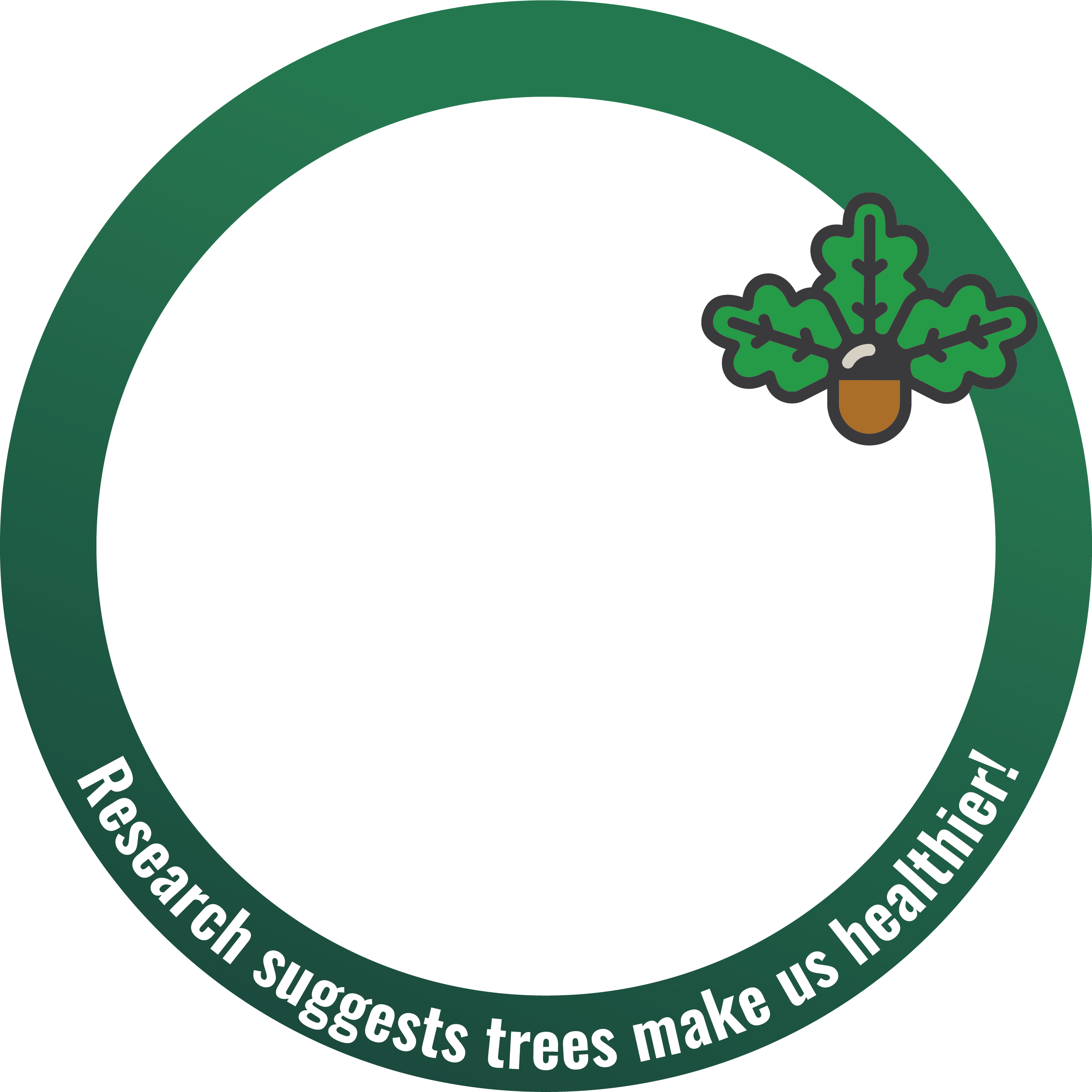
Show the Love.
Show your love of trees on your Facebook profile photo. We have created a series of frames you can add to your Facebook profile. Click here to add one automatically.

Let Them Know You Care.
Urban forests are a local issue, so you need to let your local elected officials know that having healthy trees in your community is essential. Click here to find contact information for your area and sample text for letters.
Resources to share. These need updating
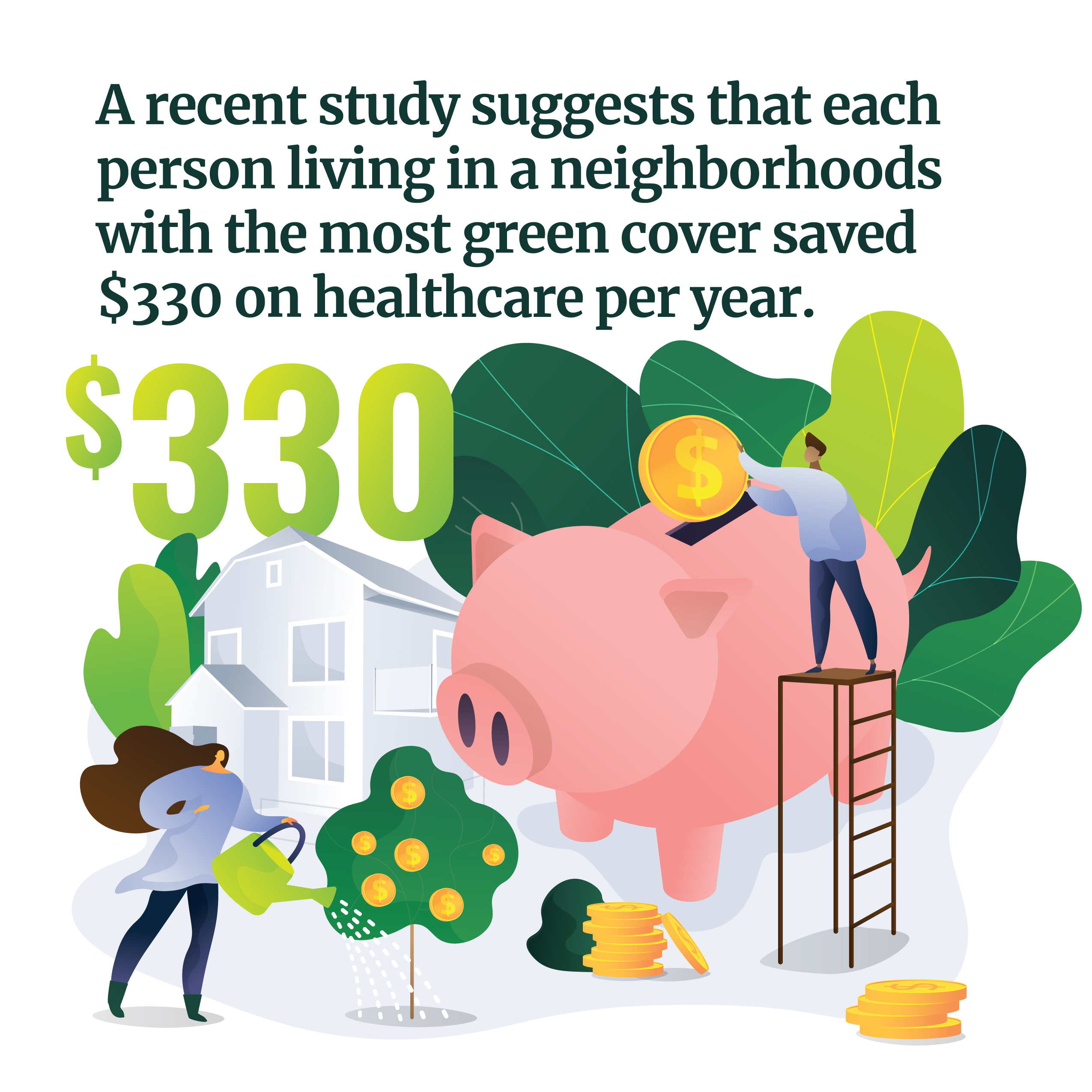
Infographic here with link to full size image to download
Caption to copy…
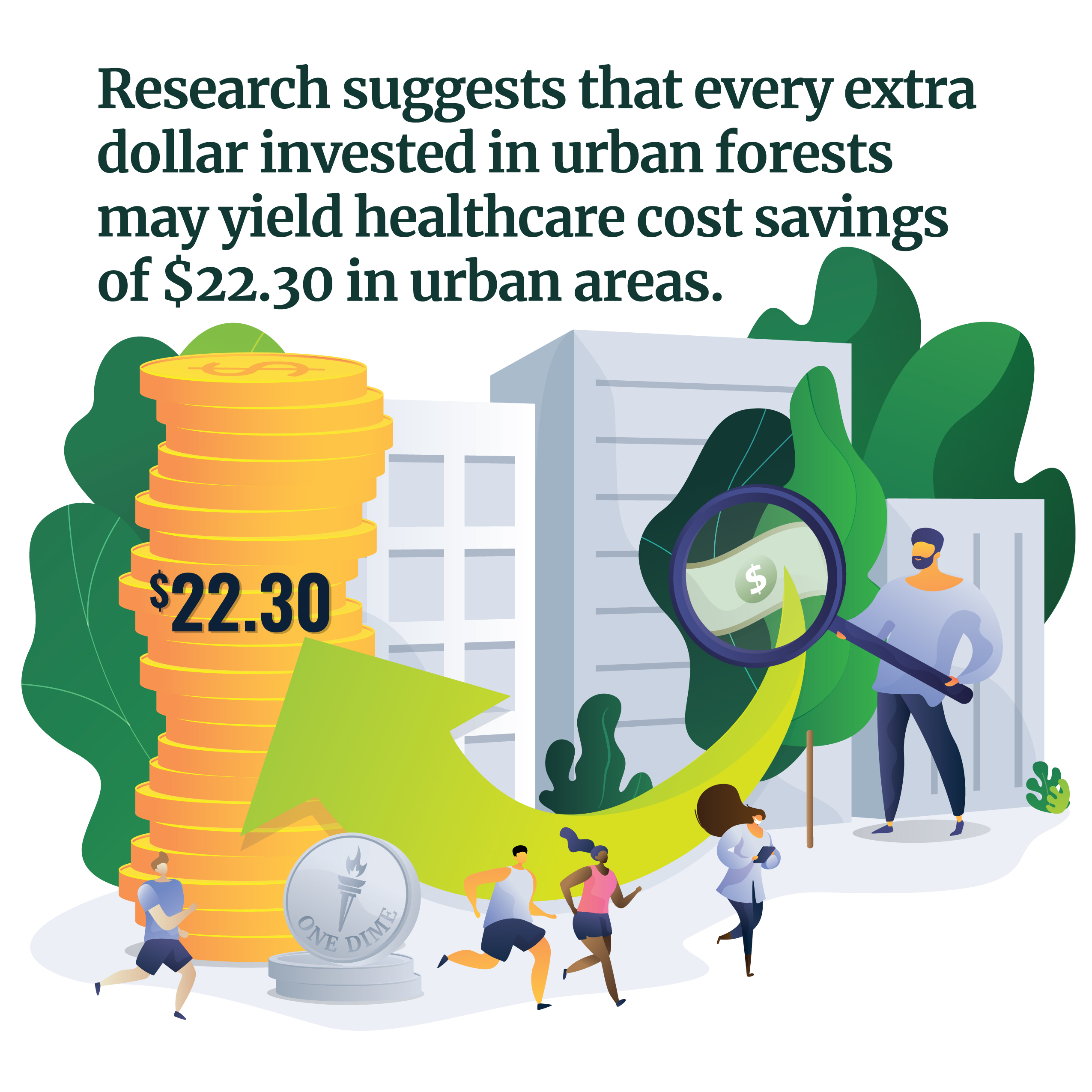
Infographic here with link to full size image to download
Caption to copy…
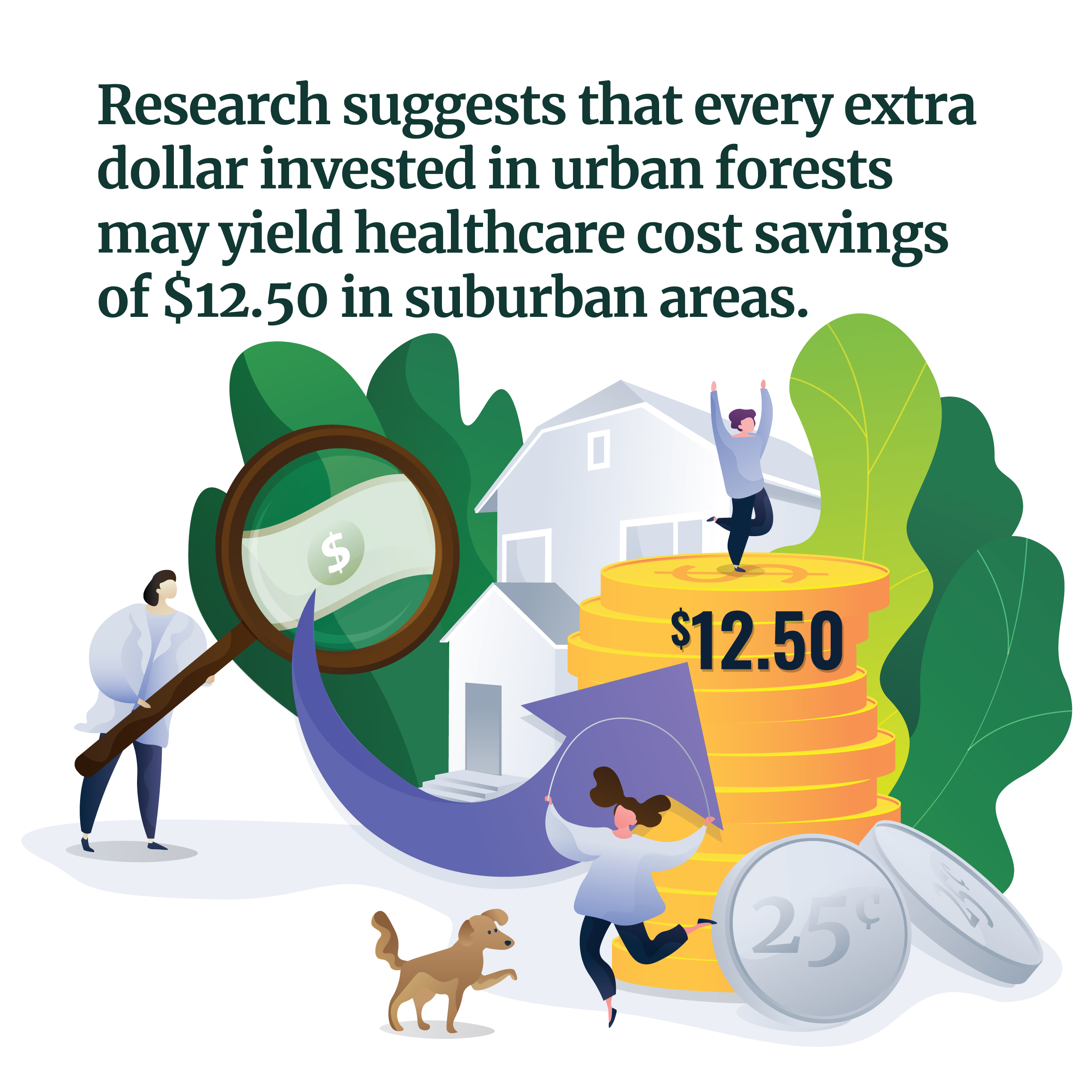
Infographic here with link to full size image to download
Caption to copy…
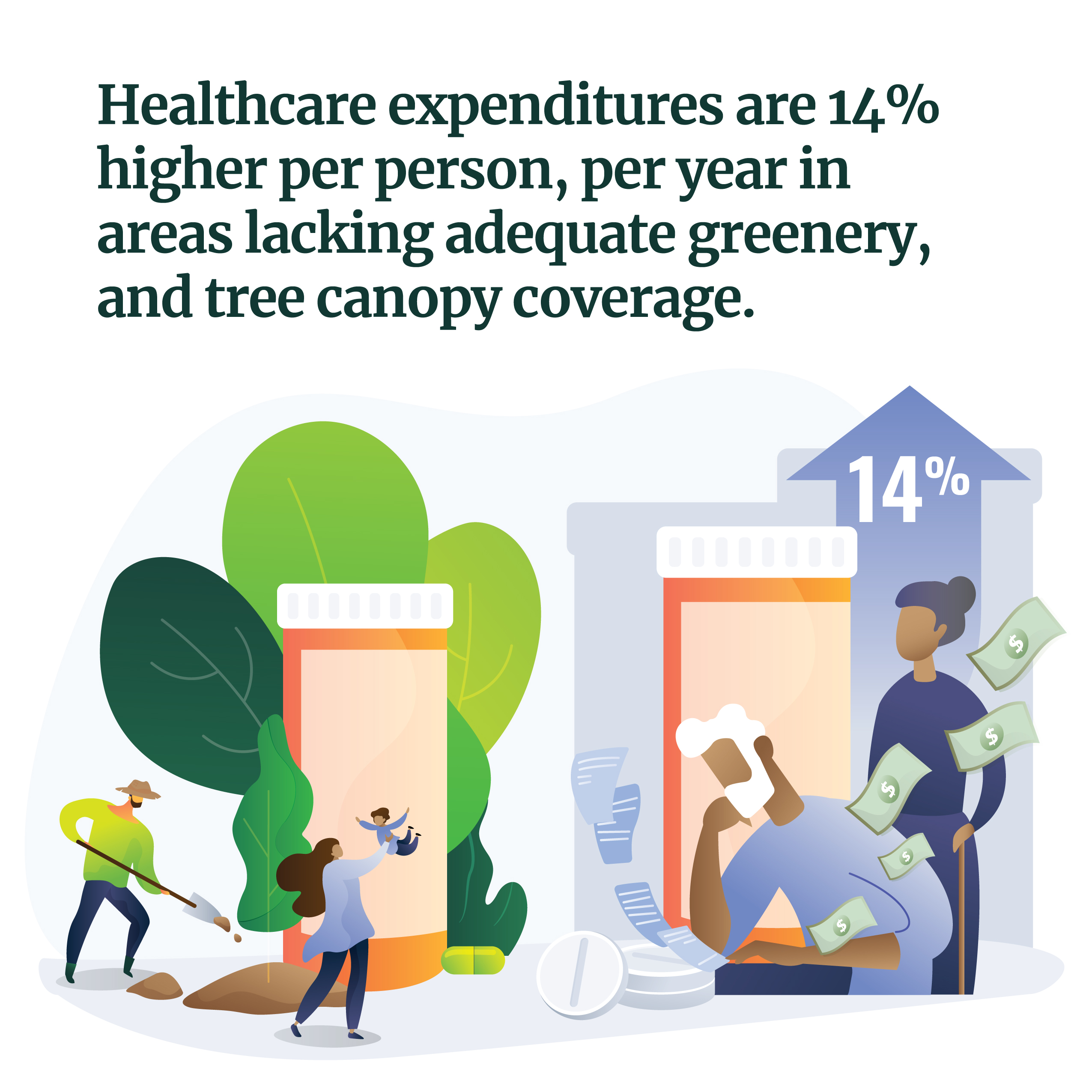
Infographic here with link to full size image to download
Caption to copy…
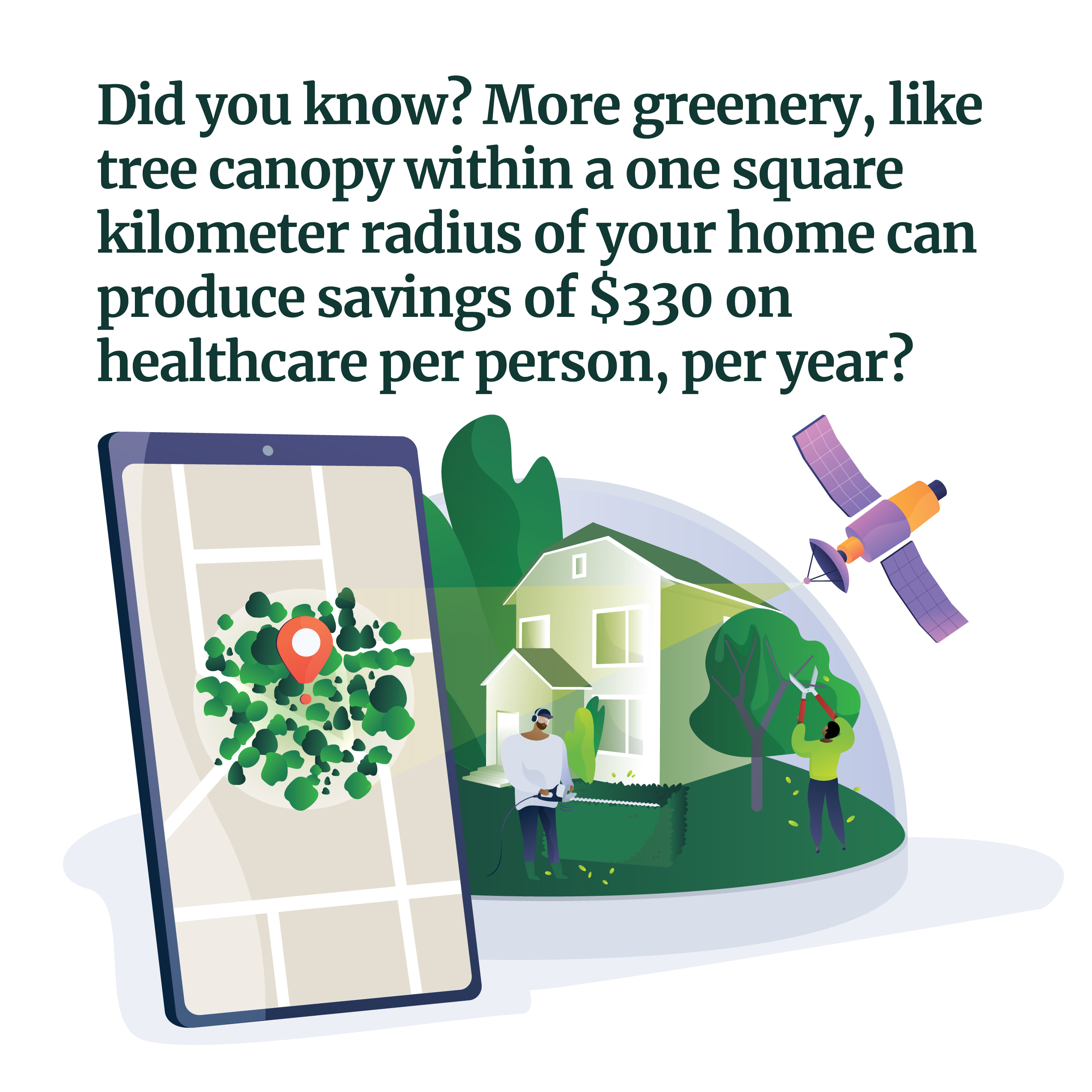
Infographic here with link to full size image to download
Caption to copy…
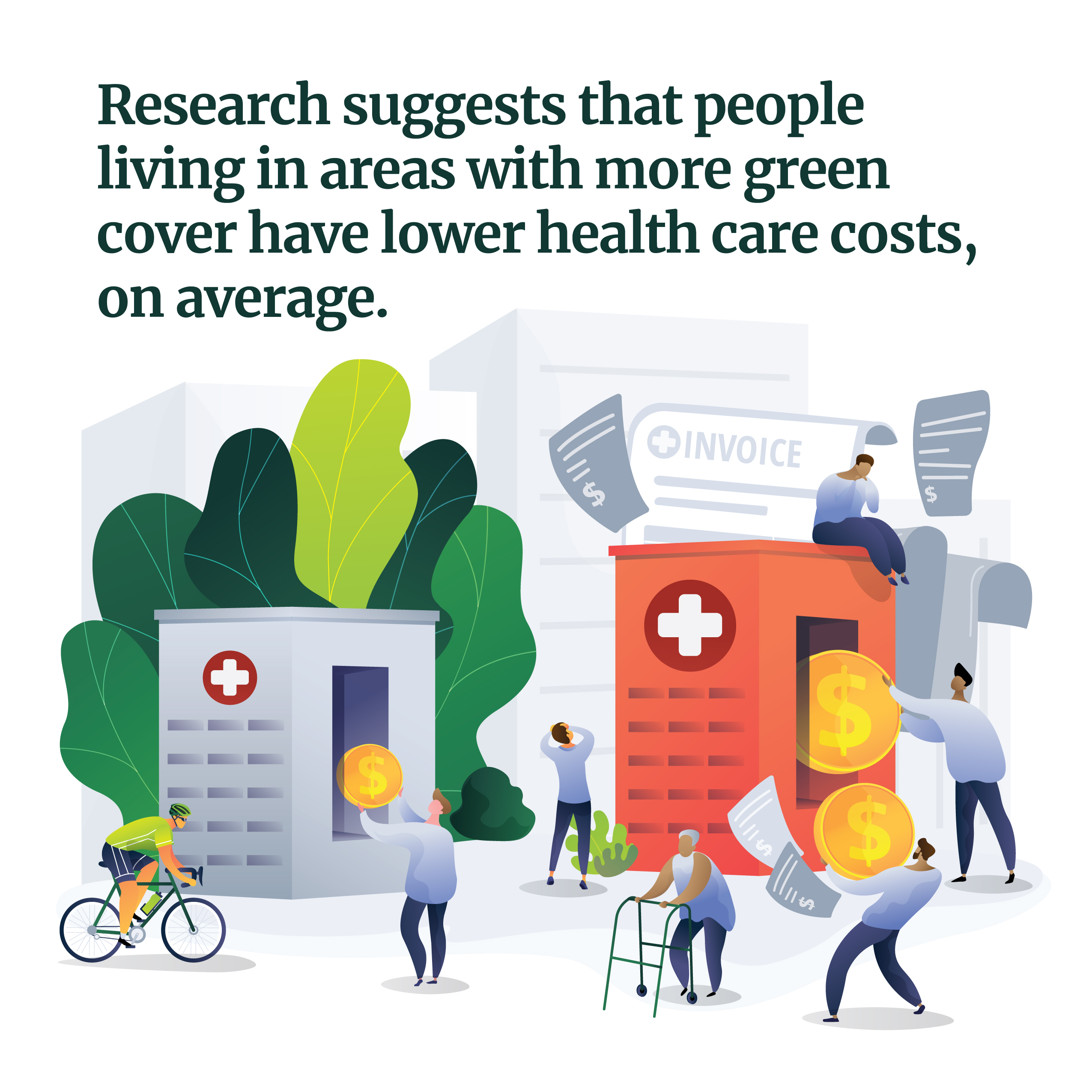
Infographic here with link to full size image to download
Caption to copy…
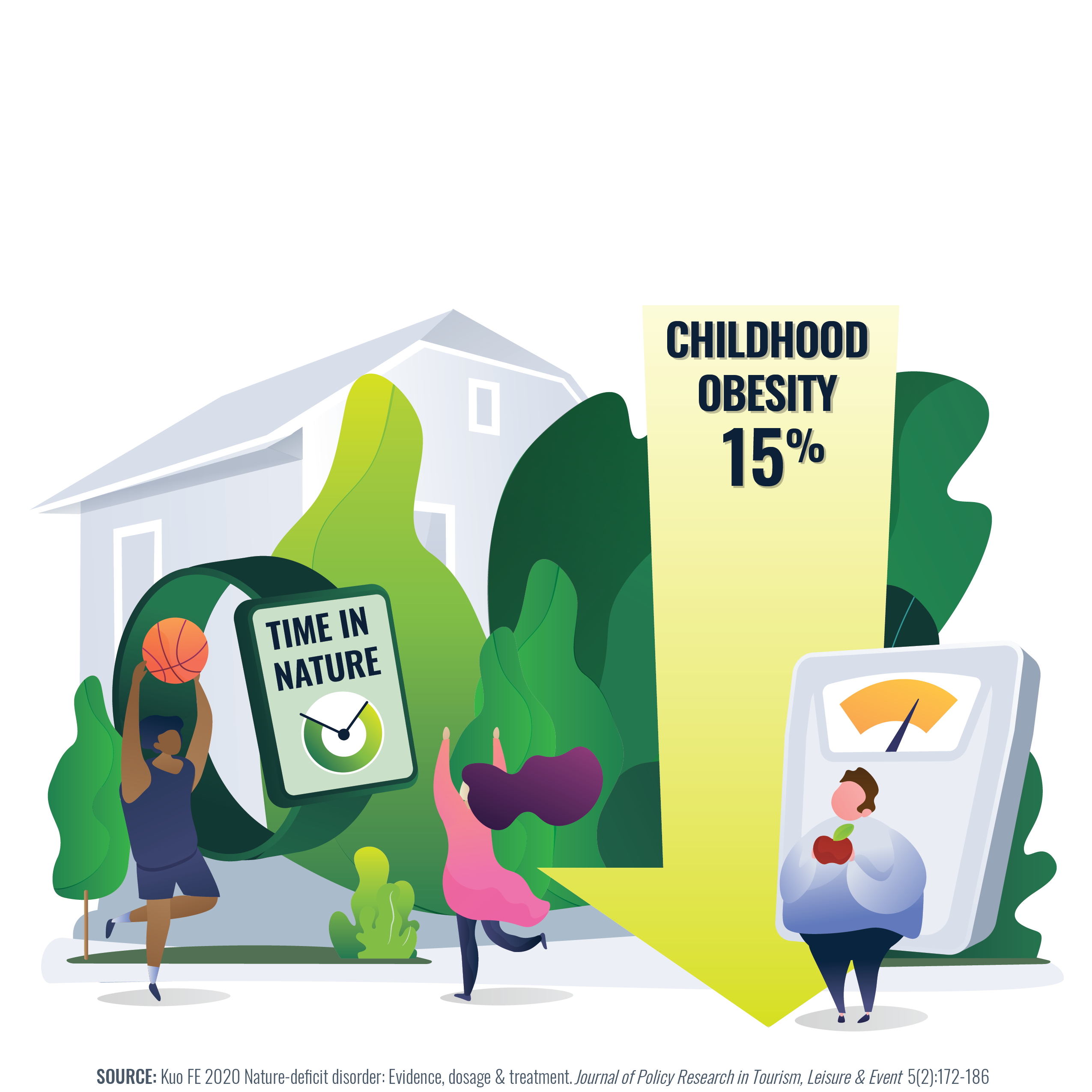
Infographic here with link to full size image to download
Caption to copy…
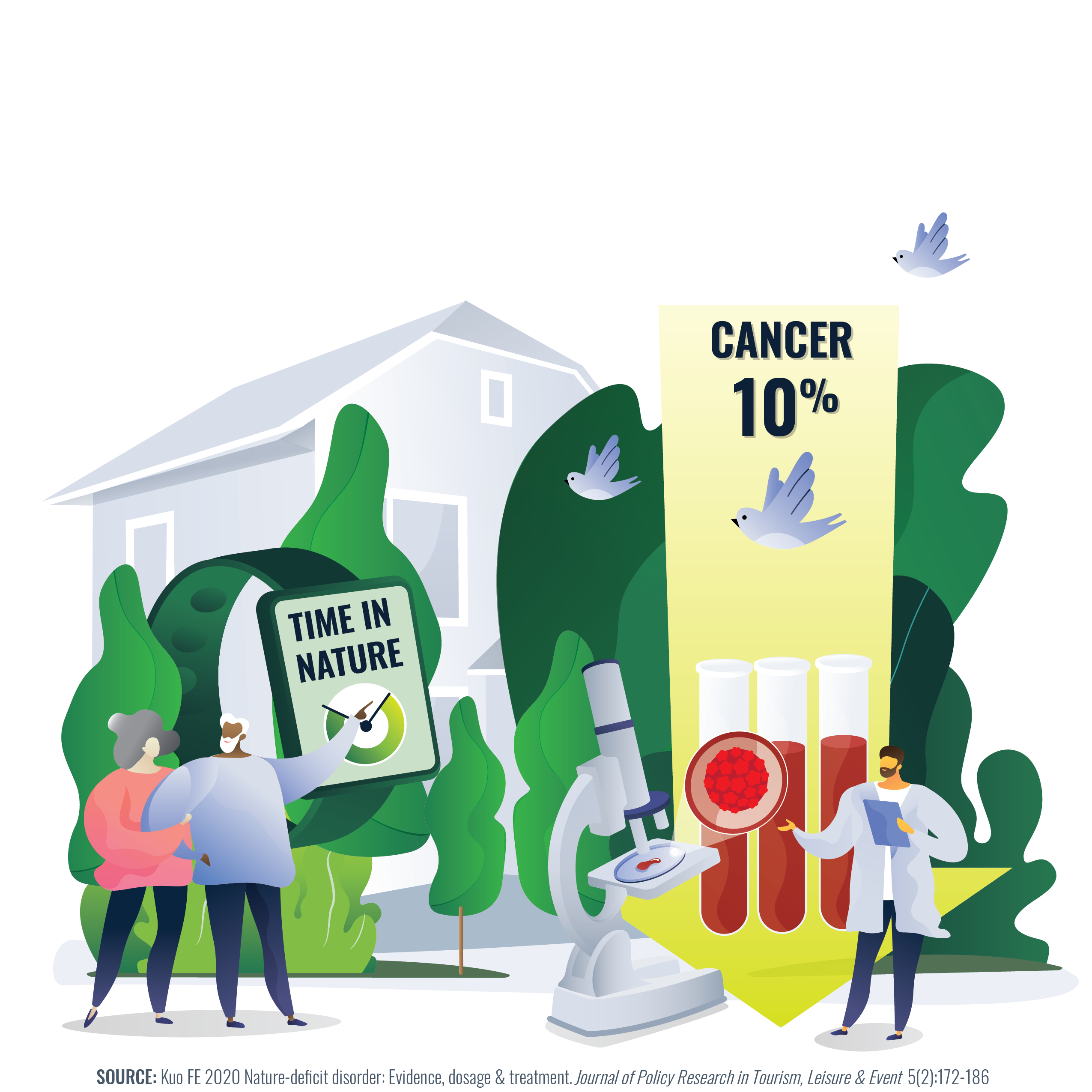
Infographic here with link to full size image to download
Caption to copy…
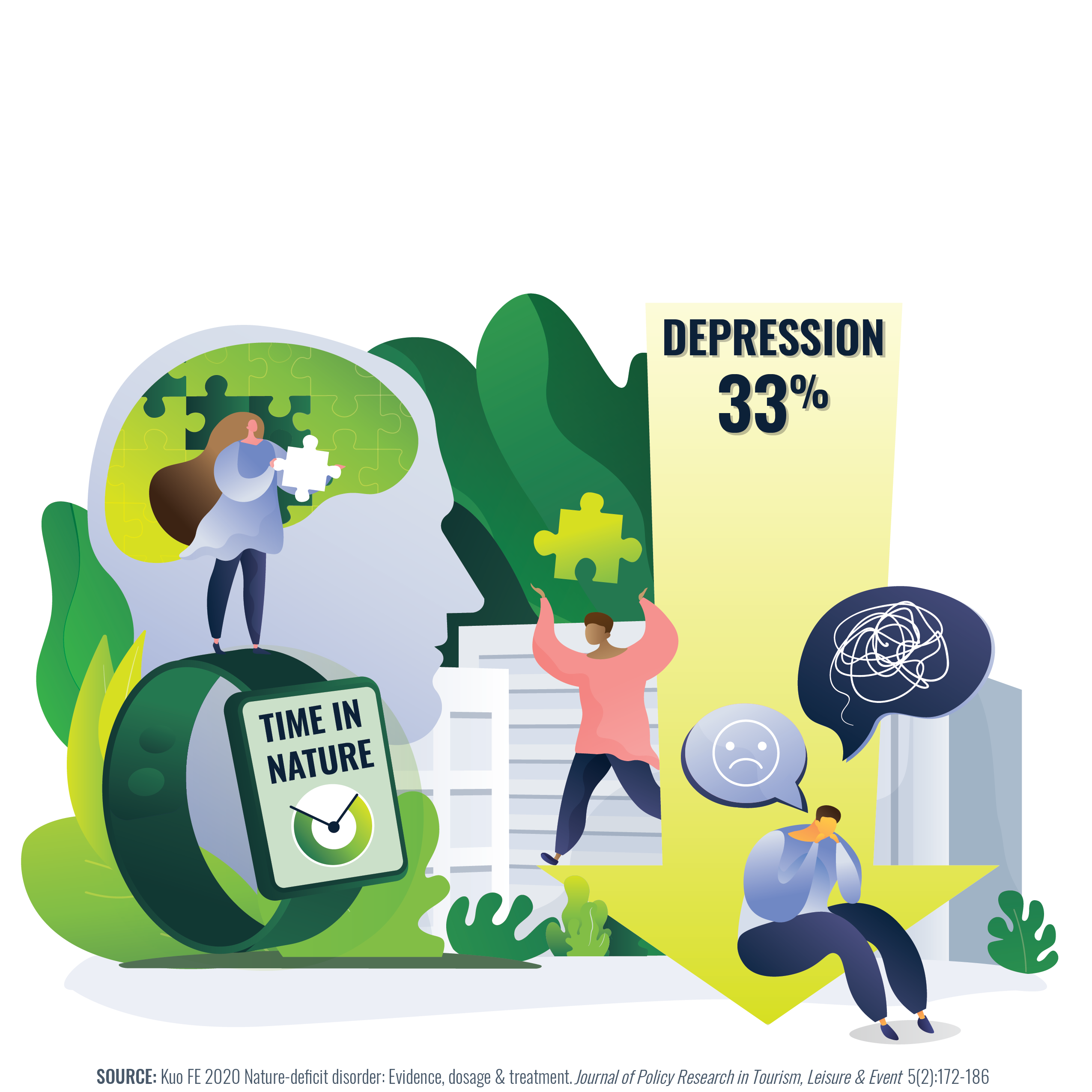
Infographic here with link to full size image to download
Caption to copy…
Bits and pieces that may be deleted.
Do we want a more academic section that discusses the study?
Learn more about the study.
The researchers found that residential greenness like that provided by tree cover was associated with lower comorbidity and lower direct health costs in over 5 million individuals, even when accounting for income and a broad array of other factors. This relationship held for 13 years of costs, two different measures of greenness, and each of three distances from home. Members’ adjusted health care costs were 14% lower in the greenest than in the least green decile (relative rate= 0.86, 95% CI 0.85-0.87). Mediation analyses indicate that residential greenness may reduce health care costs by improving health status. Findings suggest a threshold effect: health care costs drop only after greenness levels exceed NDVI values of 0.30. Greening might offer an inexpensive, widely applicable strategy for improving population health and reducing health costs.
Study Population
The study population of 5,189,303 was larger than that of 28 of the 50 United States and represents not only non-Hispanic whites (42%) but also Hispanics/Latinx, Asian/Pacific Islanders, and Blacks in meaningful proportions (24%, 24%, 7% respectively, Bay Area Census, 2015).
Data Analyzed: Population
Health care costs for each member for 2003-20015 were assembled. These costs included expenditures both within and outside of KPNC, and included costs associated with: outpatient office visits to both primary care and specialty and other care; emergency department (ED) visits; mental health and substance abuse care; hospitalizations; laboratory services; radiology services; and pharmacy use. Health care costs did not include dental costs, patient out-of-pocket expenses, or certain administrative and overhead costs associated with health plan membership, such as marketing expenses. All costs were adjusted to 2016 dollars using the Consumer Price Index.
Setting
At over 80,000 square miles, KPNC’s service area is larger than the areas of 10 states. It encompasses not only single-family suburban neighborhoods but also dense urban cores, peri-urban fringes, and more rural landscapes. Climates and ecosystems vary from Mediterranean, high desert, and great basin to montane, alpine, and northwest coastal, 3 USDA Hardiness zones range from 5b in Placer and El Dorado Counties near Lake Tahoe to 10a in San Francisco County.
Data Analyzed: Setting
The primary measure of residential greenness was the Normalized Difference Vegetation Index (NDVI), calculated for land cover within 1000 m of a given member’s residential street address.
NDVI captures the literal greenness within 30 x 30 m resolution satellite images of land cover and is provided by NASA and the USGS. Greenness was categorized in deciles across individuals in the study with the lowest (least green) decile serving as the reference category.
Frequently asked questions about the study
How do you control for differences in things like education and income?
Maecenas id auctor odio. Proin in lorem viverra, vulputate dolor at, sodales mauris. Fusce non pulvinar eros. Quisque facilisis aliquam dolor et tristique. Sed non erat arcu.
Is any of the cost data broken out by age group - children, elderly?
Mauris euismod lacus nibh, ut lobortis nulla hendrerit sed. Lorem ipsum dolor sit amet, consectetur adipiscing elit. Praesent venenatis felis ante, posuere tristique tellus iaculis vel.
What about rural areas, or naturally heavily forested places?
Mauris euismod lacus nibh, ut lobortis nulla hendrerit sed. Lorem ipsum dolor sit amet, consectetur adipiscing elit.
Regarding living in green space areas and the healthcare cost comparison being lower in greener neighborhoods, how does this reflect for people living in desert communities where there is open air and less urban density but maybe not much greenness?
Mauris euismod lacus nibh, ut lobortis nulla hendrerit sed. Lorem ipsum dolor sit amet, consectetur adipiscing elit. Praesent venenatis felis ante, posuere tristique tellus iaculis vel.
What do the different levels of tree canopy look like - say at 50%, 80% and 100% in Northern California?
Mauris euismod lacus nibh, ut lobortis nulla hendrerit sed. Lorem ipsum dolor sit amet, consectetur adipiscing elit. Praesent venenatis felis ante, posuere tristique tellus iaculis vel.
You mentioned that "more trees" resulted in positive outcomes- did you mean more canopy or actual more distinct trees?
Mauris euismod lacus nibh, ut lobortis nulla hendrerit sed. Lorem ipsum dolor sit amet, consectetur adipiscing elit. Praesent venenatis felis ante, posuere tristique tellus iaculis vel.
What about other community health factors like food deserts/transportation access/job quality. Were these included in the data analysis?
Mauris euismod lacus nibh, ut lobortis nulla hendrerit sed. Lorem ipsum dolor sit amet, consectetur adipiscing elit. Praesent venenatis felis ante, posuere tristique tellus iaculis vel.
Where can we get the in-depth results of the study?
Mauris euismod lacus nibh, ut lobortis nulla hendrerit sed. Lorem ipsum dolor sit amet, consectetur adipiscing elit. Praesent venenatis felis ante, posuere tristique tellus iaculis vel.
Where can we read the study?
Mauris euismod lacus nibh, ut lobortis nulla hendrerit sed. Lorem ipsum dolor sit amet, consectetur adipiscing elit. Praesent venenatis felis ante, posuere tristique tellus iaculis vel.
Are there any resources based on the research findings that I can share?
Mauris euismod lacus nibh, ut lobortis nulla hendrerit sed. Lorem ipsum dolor sit amet, consectetur adipiscing elit. Praesent venenatis felis ante, posuere tristique tellus iaculis vel.
References and other information
- Van Den Bosch M, Ode Sang A. Urban natural environments as nature-based solutions for improved public health – A systematic review of reviews. Environ Res 2017; 158: 373-84.
- Yeager R, Riggs DW, DeJarnett N, et al. Association Between Residential Greenness and Cardiovascular Disease Risk. J Am Heart Assoc 2018; 7(24): e009117.
- Lambert KA, Lodge C, Lowe AJ, et al. Pollen exposure at birth and adolescent lung function, and modification by residential greenness. Allergy 2019.
- Sarkar C, Webster C, Gallacher J. Residential greenness and prevalence of major depressive disorders: a cross-sectional, observational, associational study of 94879 adult UK Biobank participants. The Lancet Planetary health 2018; 2(4): e162-e73.
- Tomita A, Vandormael AM, Cuadros D, et al. Green environment and incident depression in South Africa: a geospatial analysis and mental health implications in a
resource-limited setting. The Lancet Planetary health 2017; 1(4): e152-e62. - Liao J, Chen X, Xu S, et al. Effect of residential exposure to green space on maternal blood glucose levels, impaired glucose tolerance, and gestational diabetes mellitus. Environ Res 2019; 176: 108526.
- Thiering E, Markevych I, Bruske I, et al. Associations of Residential Long-Term Air Pollution Exposures and Satellite-Derived Greenness with Insulin Resistance in German Adolescents. Environ Health Perspect 2016; 124(8): 1291-8.
- Crouse DL, Pinault L, Balram A, et al. Urban greenness and mortality in Canada’s largest cities: a national cohort study. The Lancet Planetary health 2017; 1(7): e289-e97.
- Rojas-Rueda D, Nieuwenhuijsen MJ, Gascon M, Perez-Leon D, Mudu P. Green spaces and mortality: a systematic review and meta-analysis of cohort studies. The Lancet Planetary health 2019; 3(11): e469-e77.
- Banay RF, Bezold CP, James P, Hart JE, Laden F. Residential greenness: current perspectives on its impact on maternal health and pregnancy outcomes. Int J Womens Health 2017; 9: 133-44.
- Lovasi GS, O’Neil-Dunne JP, Lu JW, et al. Urban tree canopy and asthma, wheeze, rhinitis, and allergic sensitization to tree pollen in a New York City birth cohort.
Environ Health Perspect 2013; 121(4): 494-500. - Egorov AI, Griffin SM, Converse RR, et al. Vegetated land cover near residence is associated with reduced allostatic load and improved biomarkers of neuroendocrine, metabolic and immune functions. Environ Res 2017; 158: 508-21.
- Hunter RF, Cleland C, Cleary A, et al. Environmental, health, wellbeing, social and equity effects of urban green space interventions: A meta-narrative evidence synthesis. Environ Int 2019; 130: 104923.
- Kuo M. How might contact with nature promote human health? Promising mechanisms and a possible central pathway. Frontiers in psychology 2015; 6: 1093.
- Becker DAB, M.H.E.M.; Kuo, M.; Van Den Eeden, S.K. Is green land cover associated with less health care spending? Promising findings from county-level Medicare spending in the continental United States. Urban Forestry Urban Green 2019; 41: 39-47.
- Ekkel EDV, S.d. Nearby green space and human health : Evaluating accessibility metrics. Landscape and Urban Planning 2017; 157: 214-20.
- Congedo L. Semi-Automatic Classification Plugin Documentation. . 2016. http://dx.doi.org/10.13140/RG.2.2.29474.02242/1 (accessed 6/1/2019.
- Elixhauser A, Steiner C, Harris DR, Coffey RM. Comorbidity measures for use with administrative data [see comments]. MedCare 1998; 36(1): 8-27.
- Messer LC, Laraia BA, Kaufman JS, et al. The development of a standardized neighborhood deprivation index. J Urban Health 2006; 83(6): 1041-62.
- Alexeeff SES, C.A.; Kvale, M.N.; Shan, J.; Blackburn, E.A.; Risch, N.; Ranatunga, D.K.; Jorgenson, E. Hoffmann, T.J.; Sakoda, L.; Quesenberry, C.P.; Van Den Eeden, S.K. Telomere length and socioeconomic status at neighborhood and individual levels among 80,000 adults in the Genetic Epidemiology Research on Adult Health and Aging cohort. Environ Epidemiol 2019; 3: e049.
- CalEnviroScreen 3.0. https://oehha.ca.gov/calenviroscreen/report/calenviroscreen-30 (accessed June 27, 2018.
- Dodd S, Bassi A, Bodger K, Williamson P. A comparison of multivariable regression models to analyse cost data. J Eval Clin Pract 2006; 12(1): 76-86.
- Sallis JF, Cerin E, Conway TL, et al. Physical activity in relation to urban environments in 14 cities worldwide: a cross-sectional study. Lancet 2016; 387(10034): 2207-17.
- Dadvand P, Bartoll X, Basagana X, et al. Green spaces and General Health: Roles of mental health status, social support, and physical activity. Environ Int 2016; 91:
161-7. - Mygind ES, M. P.; Quintana, D.S.; & Bentsen, P. Effects of public green space on acute psychophysiological stress response: A systematic review and meta-analysis of the experimental and quasi-experimental evidence. Environment and behavior 2019; 43.
- Wood L, Hooper P, Foster S, Bull F. Public green spaces and positive mental health – investigating the relationship between access, quantity and types of parks and mental wellbeing. Health Place 2017; 48: 63-71.
- Astell-Burt T, Feng X, Kolt GS. Does access to neighbourhood green space promote a healthy duration of sleep? Novel findings from a cross-sectional study of 259
319 Australians. BMJ Open 2013; 3(8). - Heo S, Bell ML. The influence of green space on the short-term effects of particulate matter on hospitalization in the U.S. for 2000-2013. Environ Res 2019; 174: 61-8.
- Shen YS, Lung SC. Mediation pathways and effects of green structures on respiratory mortality via reducing air pollution. Sci Rep 2017; 7: 42854.
- Taylor L HD. Defining greenspace: Multiple uses across multiple disciplines. Landscape Urban Planning 2017; 158: 25-38.
- WHO. Urban green spaces. https://www.who.int/sustainabledevelopment/
cities/health-risks/urban-green-space/en/ (accessed 6/5/2019. - Klompmaker JO, Hoek G, Bloemsma LD, et al. Green space definition affects associations of green space with overweight and physical activity. Environ Res 2018;
160: 531-40. - Browning M, Lee K. Within What Distance Does “Greenness” Best Predict Physical Health? A Systematic Review of Articles with GIS Buffer Analyses across the
Lifespan. Int J Environ Res Public Health 2017; 14(7). - Villeneuve PJ, Ysseldyk RL, Root A, et al. Comparing the Normalized Difference Vegetation Index with the Google Street View Measure of Vegetation to Assess Associations between Greenness, Walkability, Recreational Physical Activity, and Health in Ottawa, Canada. Int J Environ Res Public Health 2018; 15(8).
- Reid CE, Kubzansky LD, Li J, Shmool JL, Clougherty JE. It’s not easy assessing greenness: A comparison of NDVI datasets and neighborhood types and their associations with self-rated health in New York City. Health Place 2018; 54: 92-101.
- Rugel EJ, Henderson SB, Carpiano RM, Brauer M. Beyond the Normalized Difference Vegetation Index (NDVI): Developing a Natural Space Index for population level
health research. Environ Res 2017; 159: 474-83. - Su JG, Dadvand P, Nieuwenhuijsen MJ, Bartoll X, Jerrett M. Associations of green space metrics with health and behavior outcomes at different buffer sizes and remote sensing sensor resolutions. Environ Int 2019; 126: 162-70.
- White MP, Pahl S, Wheeler BW, Depledge MH, Fleming LE. Natural environments and subjective wellbeing: Different types of exposure are associated with different aspects of wellbeing. Health Place 2017; 45: 77-84.
- Feng X, Astell-Burt T. Residential green space quantity and quality and symptoms of psychological distress: a 15-year longitudinal study of 3897 women in postpartum. BMC psychiatry 2018; 18(1): 348.
- Jennings V, Bamkole O. The Relationship between Social Cohesion and Urban Green Space: An Avenue for Health Promotion. Int J Environ Res Public Health 2019;
16(3). - Panduro TEV, K.L. Classification and valuation of urban green spaces—A hedonic house price valuation. Landscape Urban Planning 2013; 120: 119-228.
- Garvin EC, Cannuscio CC, Branas CC. Greening vacant lots to reduce violent crime: a randomised controlled trial. Inj Prev 2013; 19(3): 198-203.
- Browning M, Rigolon A. Could nature help children rise out of poverty? Green space and future earnings from a cohort in ten U.S. cities. Environ Res 2019: 108449.
- Branas CC, Cheney RA, MacDonald JM, Tam VW, Jackson TD, Ten Have TR. A difference-in-differences analysis of health, safety, and greening vacant urban space. Am J Epidemiol 2011; 174(11): 1296-306.
- Knobel P, Dadvand P, Maneja-Zaragoza R. A systematic review of multidimensional quality assessment tools for urban green spaces. Health Place 2019; 59: 102198.
- Dadvand P, Nieuwenhuijsen MJ, Esnaola M, et al. Green spaces and cognitive development in primary schoolchildren. Proc Natl Acad Sci U S A 2015; 112(26): 7937-42.
- Zhang L, Zhou S, Kwan MP, Chen F, Lin R. Impacts of Individual Daily Greenspace Exposure on Health Based on Individual Activity Space and Structural Equation Modeling. Int J Environ Res Public Health 2018; 15(10).
- Gascon M, Zijlema W, Vert C, White MP, Nieuwenhuijsen MJ. Outdoor blue spaces, human health and well-being: A systematic review of quantitative studies. Int J Hyg Environ Health 2017; 220(8): 1207-21.
ASSUMPTIONS
- a completely intuitive guess: bringing our population from .25 NDVI to .45 NDVI will require, on average, a 30% increase in tree canopy
- Each tree has a 5m crown on average
- Planting and maintenance per tree is $100 over ten years (this assumes we can find one unpaved spot to plant in for each 267 sq m)
- population density in suburban areas of 1400 people/sq km
- population density in urban areas of 2500 people/sq km
CALCULATIONS
- It costs $100 to increase canopy by 80 sq m (one tree, 5m crown, area of crown is pi x 5^2)
- A 30% increase in canopy corresponds to 1 new (80 sq m) tree for every 267 sq m of land (80/.3)
- It will cost us $100 for every 267 sq m we want to green for health, or roughly 37 cents per sq m, over ten years
- health care savings per sq km in suburban areas [$330 savings per person per year]*[10 years]*[1400 persons/sq km] = $4.62 M/sq km, or $4.62 per sq m
- health care savings per sq km in urban areas [$330 savings per person per year]*[10 years]*[2500 persons/sqkm] = $8.25 M/sq km, or $8.25 per sq m
KNOWN PROBLEMS WITH THE ASSUMPTIONS
- I have no idea what a .2 to .45 NDVI difference corresponds to in tree canopy. It could be half as much, or two or three times more than 40% percent of land cover — but the calculation is fairly robust to poor estimates of this number. A 50% increase in canopy cover would only cost 62 cents/sq m, and a 25% increase would cost 31 cents/sq m — regardless, we’re talking less than a dollar per sq m, whereas the health care savings projections are on the order of multiple dollars.
- this assumes 5m crown over all ten years across all different types/varieties
- this assumes 100% tree survival (overly optimistic) and that all trees die when ten years is up (overly pessimistic)
- estimates of population density for suburbs/cities vary greatly.
Partner logos with links for everyone involved in the study.

